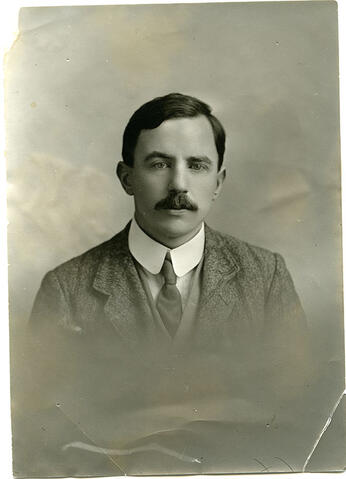
Zona do título e menção de responsabilidade
Título próprio
Reginald J.G. Bateman - Portrait
Designação geral do material
- Material gráfico
Título paralelo
Outra informação do título
Título e menções de responsabilidade
Notas ao título
Nível de descrição
Item
Entidade detentora
Código de referência
Zona de edição
Menção de edição
Menção de responsabilidade da edição
Zona de detalhes específicos de materiais
Menção da escala (cartográfica)
Menção da projecção (cartográfica)
Menção das coordenadas (cartográfico)
Menção da escala (arquitectura)
Autoridade emissora e denominação (filatélica)
Zona de datas de criação
Data(s)
-
[between 1909 and 1914] (Produção)
Zona de descrição física
Descrição física
1 photograph : b&w ; 10 x 14 cm
Zona dos editores das publicações
Título próprio do recurso continuado
Títulos paralelos das publicações do editor
Outra informação do título das publicações do editor
Menção de responsabilidade relativa ao editor do recurso contínuo
Numeração das publicações do editor
Nota sobre as publicações do editor
Zona da descrição do arquivo
Nome do produtor
História custodial
Âmbito e conteúdo
Head and shoulders image of Reginald J.G. Bateman, first Professor of English, 1909-1918.
Bio/Historical Note: Reginald John Godfrey Bateman was born on 12 October 1883 in County Kerry, Ireland. He received his early education at Royal School, County Fermanagh, and both his B.A. (1906) and MA. (1909) from Trinity College. Shortly after graduation in 1909 Bateman immigrated to Canada and was hired as Professor of English at the University of Saskatchewan. He enlisted as a private in the 28th Battalion, Canadian Expeditionary Force (CEF), in September 1914 and served in France. In early 1916 the idea of a Western University Battalion took root. Initially the Canadian military was reluctant, but the combination of a strong lobbying campaign and the need for fresh troops to replace the mounting casualties in Europe tipped the scales. Bateman was sent back to Canada to raise a company of the 196th (Western Universities) Battalion. The 196th was to consist of a company from each of the four western provinces. Once formed, it trained at Camp Hughes in Manitoba and was then sent to England. The 196th’s history was brief. Once in England it was broken up to reinforce existing units. A high portion of the recruits eventually found themselves in the officers’ ranks. Many found themselves assigned to the Saskatchewan-dominated 46th Battalion. Also known as the "Suicide Battalion," it fought in some of the bloodiest encounters of the war. Reinforcements were constantly needed as battle after battle decimated its ranks. Of the 5,374 men in the 46th Battalion, 4,917 were either killed or wounded. With the end of the war came demobilization and the end of the 46th Battalion. Reginald Bateman did not return. He was killed near Dury, France on 3 September 1918.
Zona das notas
Condição física
Fonte imediata de aquisição
Organização
Idioma do material
Script do material
Localização de originais
Disponibilidade de outros formatos
Restrições de acesso
Termos que regulam o uso, reprodução e publicação
Copyright: Public domain
Other terms: Responsibility regarding questions of copyright that may arise in the use of any images is assumed by the researcher.

